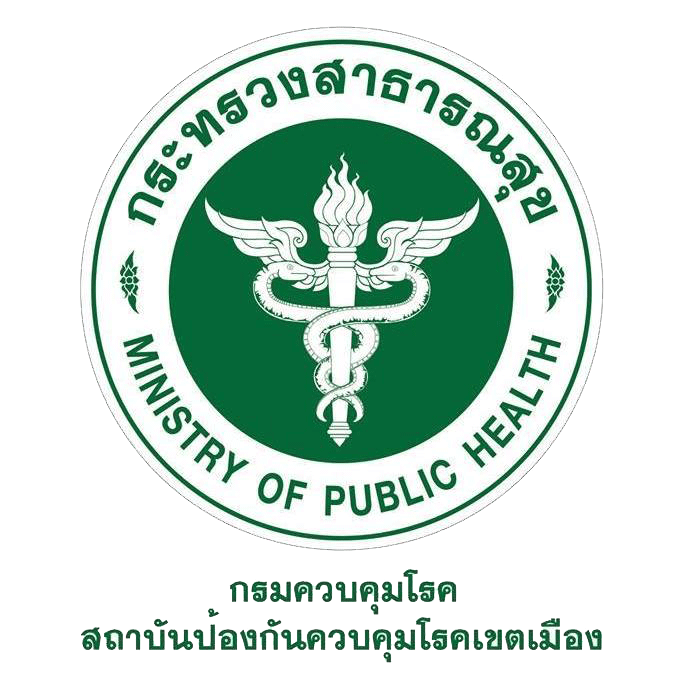การสำรวจความรู้ และทัศนคติต่อการใช้สมาร์ทวอทช์ และแอปพลิเคชันสุขภาพเพื่อการจัดการโรคเรื้อรังในประชาชนคนไทยอายุ 15-70 ปี
Main Article Content
บทคัดย่อ
โรคไม่ติดต่อเป็นสาเหตุหลักของการเสียชีวิตทั่วโลกรวมทั้งในประเทศไทย การใช้สมาร์ทวอทช์และแอปพลิเคชันสุขภาพในการจัดการโรคเรื้อรัง มีบทบาทสำคัญในการจัดการโรคเรื้อรัง แบบเรียลไทม์ซึ่งมีผลสำคัญต่อการดูแลสุขภาพของผู้ใช้งาน การศึกษานี้มีวัตถุประสงค์เพื่อศึกษาความรู้ ทัศนคติ และปัจจัยที่มีผลต่อการใช้สมาร์ทวอทช์และแอปพลิเคชัน ดูแลสุขภาพในการจัดการโรคเรื้อรัง การศึกษาครั้งนี้เป็นการวิจัยเชิงสำรวจแบบภาคตัดขวาง ทำการเก็บ ข้อมูลตั้งแต่วันที่ 1 มีนาคม - 30 เมษายน พ.ศ. 2567 จากประชากรในพื้นที่กรุงเทพมหานครและปริมณฑลอายุ ระหว่าง 15-70 ปี ซึ่งสามารถเข้าถึงอินเทอร์เน็ตได้จำนวนกลุ่มตัวอย่างเท่ากับ 356 คน เป็นการสุ่มโดยใช้แบบสอบ ถามออนไลน์ผ่านแบบฟอร์ม Google ซึ่งได้รับการตรวจสอบจากผู้เชี่ยวชาญ และมีค่า IOC เท่ากับ 1.0 การศึกษาพบว่า มีอาสาสมัครจำนวน 718 คน เข้าร่วมการศึกษากลุ่มตัวอย่างส่วนใหญ่ มีความรู้เกี่ยวกับการใช้สมาร์ทวอทช์และแอปพลิเคชันสุขภาพในการจัดการโรคเรื้อรัง ในการจัดการโรคเรื้อรังอยู่ในระดับปานกลางที่ ร้อยละ 75.91 และมีทัศนคติที่ดีต่อการใช้งานที่ ร้อยละ 78.41 ปัจจัยที่มีความสำคัญต่อทัศนคติในการใช้สมาร์ทวอทช์และแอปพลิเคชันสุขภาพ ในการ จัดการโรคเรื้อรัง ได้แก่ ความรู้และเพศ (Beta=0.253, p<0.01 และ Beta=0.151, p<0.01 ตามลำดับ) การใช้งาน สมาร์ทวอทช์และแอปพลิเคชันสุขภาพมักเกี่ยวข้องกับการเฝ้าติดตามสุขภาพ และกิจกรรม การออกกำลังกายผู้ที่ไม่มี โรคเรื้อรังหรือไม่ได้ออกกำลังกายอย่างจริงจังมักจะไม่เห็นความจำเป็นในการใช้สมาร์ทวอทช์ ในขณะที่ผู้ที่มีปัญหา สุขภาพ หรือออกกำลังกายอย่างจริงจังมักเห็นประโยชน์ในการใช้สมาร์ทวอทช์ในการติดตามและดูแลสุขภาพของตนเอง ควรส่งเสริมความรู้เกี่ยวกับการใช้สมาร์ทวอทช์และแอปพลิเคชันสุขภาพผ่านการอบรมและสื่อการเรียนรู้ โปรโมทประโยชน์ในการเฝ้าติดตามสุขภาพและการออกกำลังกาย โดยเฉพาะในผู้ที่มีปัญหาสุขภาพ สร้างความตระหนักผ่านการเผยแพร่ข้อมูลและเรื่องราวความสำเร็จ พัฒนาฟีเจอร์ให้ใช้งานง่ายขึ้น เพื่อกระตุ้นความสนใจและการยอมรับ และเน้นการใช้สมาร์ทวอทช์ในการติดตามสุขภาพทั่วไป เช่น การนอนหลับและการวัดความเครียด
Article Details

อนุญาตภายใต้เงื่อนไข Creative Commons Attribution-NonCommercial-NoDerivatives 4.0 International License.
บทความที่พิมพ์ในวารสารสถาบันป้องกันควบคุมโรคเขตเมือง ถือว่าเป็นผลงานวิชาการ งานวิจัยและวิเคราะห์ ตลอดจนเป็นความเห็นส่วนตัวของผู้เขียนเอง ไม่ใช่ความเห็นของสถาบันป้องกันควบคุมโรคเขตเมือง หรือคณะบรรณาธิการแต่ประการใด ผู้เขียนจำต้องรับผิดชอบต่อบทความของตน
เอกสารอ้างอิง
World Health Organization [Internet]. Geneva: World Health Organization; c2023 Noncommunicable diseases; 2023 [cite 2024 Jun 21]; [about 1 p.]. Available from: https://www.who.int/news-room/fact-sheets/detail/noncommunicable-diseases
GBD 2016 Causes of Death Collaborators. Global, regional, and national age-sex specific mortality for 264 causes of death, 1980-2016: a systematic analysis for the Global Burden of Disease Study 2016. Lancet. 2017 Sep 16;390(10100):1151-210.
United Nations Thailand. Prevention and Control of Noncommunicable Diseases in Thailand – The Case for Investment. Nonthaburi: Ministry of Public Health (Thailand); 2021.
Guerreiro MP, Strawbridge J, Cavaco AM, Félix IB, Marques MM, Cadogan C. Development of a European competency framework for health and other professionals to support behaviour change in persons self-managing chronic disease. BMC Med Educ. 2021 May 20;21(1):1-14.
Mattison G, Canfell O, Forrester D, Dobbins C, Smith D, Töyräs J, et al. The Influence of Wearables on Health Care Outcomes in Chronic Disease: Systematic Review. J Med Internet Res. 2022 Jul 1;24(7):e36690.
Mattison G, Oliver JC, Forrester D, Dobbins C, Smith D, Reid D, et al. A step in the right direction: the potential role of smartwatches in supporting chronic disease prevention in health care. Med J Aust 2023;218 (9):384-88.
Uakarn C, Chaokromthong K, Sintao N. Sample Size Estimation using Yamane and Cochran and Krejcie and Morgan and Green Formulas and Cohen Statistical Power Analysis by G*Power and Comparisions. APHEIT International Journal of Interdisciplinary Social Sciences and Technology. 2021;10(2): 76-86.
Bloom BS, Hastings T, Madaus GF, Baldwin TS. Handbook on formative and summative evaluation of student learning. New York: McGraw-Hill; 1971.
Lu Y, Zhou Z, Li X, Study on the relationship between technology, data and body isomorphism—The example of smartwatches. Telematics and Informatics Reports. 2024;13:1-7.
Choi HY, Keil M. Baird AM. Intention to Use Smartwatch Health Applications: A Regulatory Fit and Locus of Control Perspective. Information & Management. 2022;59(6):1-37.
Chankong N, Boonyagul S, Thongpance N, Mekkaew C, Wongkamhang A. Factors Affecting the Adoption of Smartwatch for Tracking Health. International Journal of Membrane Science and Technology. 2023;10(1):1715-29.
สิทธิพร ปานเปาว์. ปัจจัยที่ส่งผลต่อความตั้งใจใช้สมาร์ทวอทช์ของผู้บริโภคในกรุงเทพมหานคร [ปริญญานิพนธ์ปริญญาบริหารธุรกิจมหาบัณฑิต]. กรุงเทพฯ: มหาวิทยาลัยกรุงเทพ; 2560.
Babu M, Lautman Z, Lin X, Sobota MHB, Snyder MP. Wearable Devices: Implications for Precision Medicine and the Future of Health Care. Annu Rev Med. 2024 Jan 29;75:401-15.
Shandhi MMH, Singh K, Janson N, Ashar P, Singh G, Lu B, Hillygus DS, Maddocks JM, Dunn JP. Assessment of ownership of smart devices and the acceptability of digital health data sharing. NPJ Digit Med. 2024 Feb 22;7(1):1-10.
Al-Maroof RS, Alhumaid K, Alhamad AQ, Aburayya A, Sallo SA. User Acceptance of Smart Watch for Medical Purposes: An Empirical Study. Future Internet. 2021:13(5),1-20.
Manini TM, Mendoza T, Battula M, Davoudi A, Kheirkhahan M, Young ME, et al. Perception of Older Adults Toward Smartwatch Technology for Assessing Pain and Related Patient-Reported Outcomes: Pilot Study. JMIR Mhealth Uhealth. 2019 Mar 26;7(3):e10044.
Zhu. Z, Ren Z, Duan P. Modeling of Smart Watch and System Construction Method for the Elderly Based on Big Data. Mathematical Problems in Engineering. 2022;(5):1-9.


